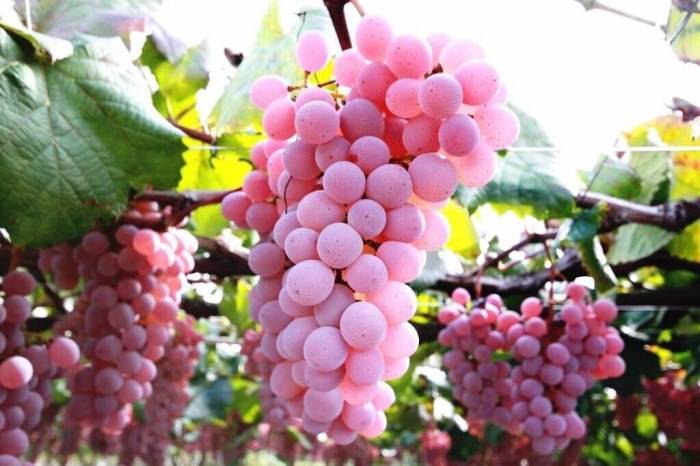Koshu Grapes from Japan Gain Popularity in Western Wine Markets
Known for low alcohol and delicate flavors, Koshu wines are receiving international acclaim, particularly in the UK and US.
2025-02-27

Koshu, Japan's native grape variety, is gaining popularity in Western markets, particularly in the UK and US. Known for its low alcohol content and delicate, semi-aromatic character, Koshu is versatile and used to produce a range of wines, including sparkling and orange varieties. The grape's best examples are receiving international recognition, such as Suntory’s Tomi Koshu 2022, which won Best in Show at the 2024 Decanter World Wine Awards. Grace Wine's Koshu Misawa Vineyard also scored highly in the same competition.
Koshu has been cultivated in Japan for centuries, primarily in the Yamanashi prefecture, which accounts for 95% of its production. This region, located near Mount Fuji, is known for its volcanic soils and is often referred to as Japan’s ‘Home of Fruits.’ The grape's origins are believed to trace back to China, having traveled through the Silk Road. Koshu's name is derived from the ancient kingdom of Kai, now Yamanashi.
Local legends offer two tales about Koshu's discovery. One story involves a monk named Gyōki, who, during the Nara period, dreamt of a healing Buddha holding grapes. He later found a grapevine and used it for medicinal purposes. Another tale from 1186 tells of a villager named Kageyu, who discovered a wild grape species and cultivated it, eventually presenting it to the first Shōgun of the Kamakura government.
Koshu was primarily a table grape until 1870, when a monk and a businessman began winemaking after observing Westerners drinking wine in Yokohama. They used a wooden hand press and sake barrels for storage. By 1877, Katsunuma had established a winemaking company and sent pioneers to France to study viticulture, marking the start of modern winemaking in Japan.
In 2004, DNA research by UC Davis confirmed Koshu as vitis vinifera, suggesting its journey from Europe to Japan via China. Yamanashi produces the majority of Koshu grapes, with 3,300 tonnes reported in 2018. The region's climate, with over 1,000mm of annual rainfall, poses challenges for yield control. Traditional vine training methods, such as the X-shaped pergola system, are used to manage these challenges. Modern techniques, like vertical shoot positioning, are also being explored by producers like Grace Wine and Suntory.
Koshu grapes have thick skins to withstand rain, and growers often cover them with wax paper hats for protection. Plastic rain covers are also used to keep the grapes dry. Historically, Koshu wines were sweet and fruity, but since the 1980s, producers have shifted towards drier styles and 'sur lie' expressions. The grape's delicate nature lends itself to refreshing wines with notes of yuzu, Japanese lime, pear blossom, and steamed rice. Its bright acidity adds purity and finesse.
When aged on lees or in used barrels, Koshu develops more body and umami depth. Extended skin contact can reveal red fruit characteristics and an orange hue. Winemakers typically avoid excessive new oak to preserve the grape's elegance. Koshu pairs well with seafood and umami-rich Japanese dishes, such as sushi and tempura, making it a natural choice for these cuisines.
Founded in 2007, Vinetur® is a registered trademark of VGSC S.L. with a long history in the wine industry.
VGSC, S.L. with VAT number B70255591 is a spanish company legally registered in the Commercial Register of the city of Santiago de Compostela, with registration number: Bulletin 181, Reference 356049 in Volume 13, Page 107, Section 6, Sheet 45028, Entry 2.
Email: [email protected]
Headquarters and offices located in Vilagarcia de Arousa, Spain.